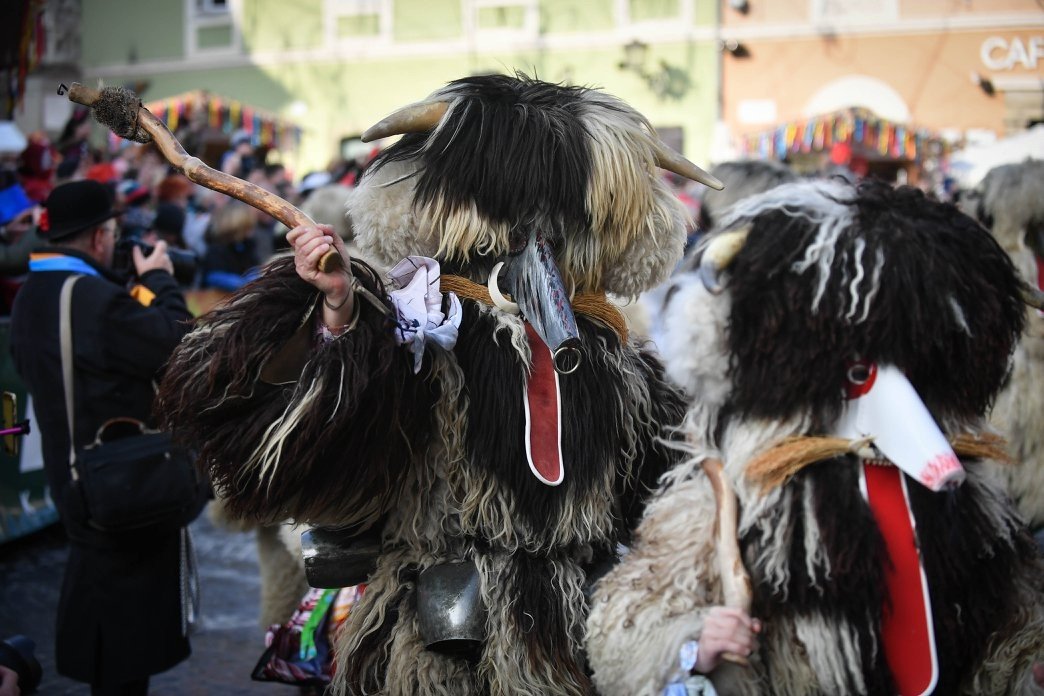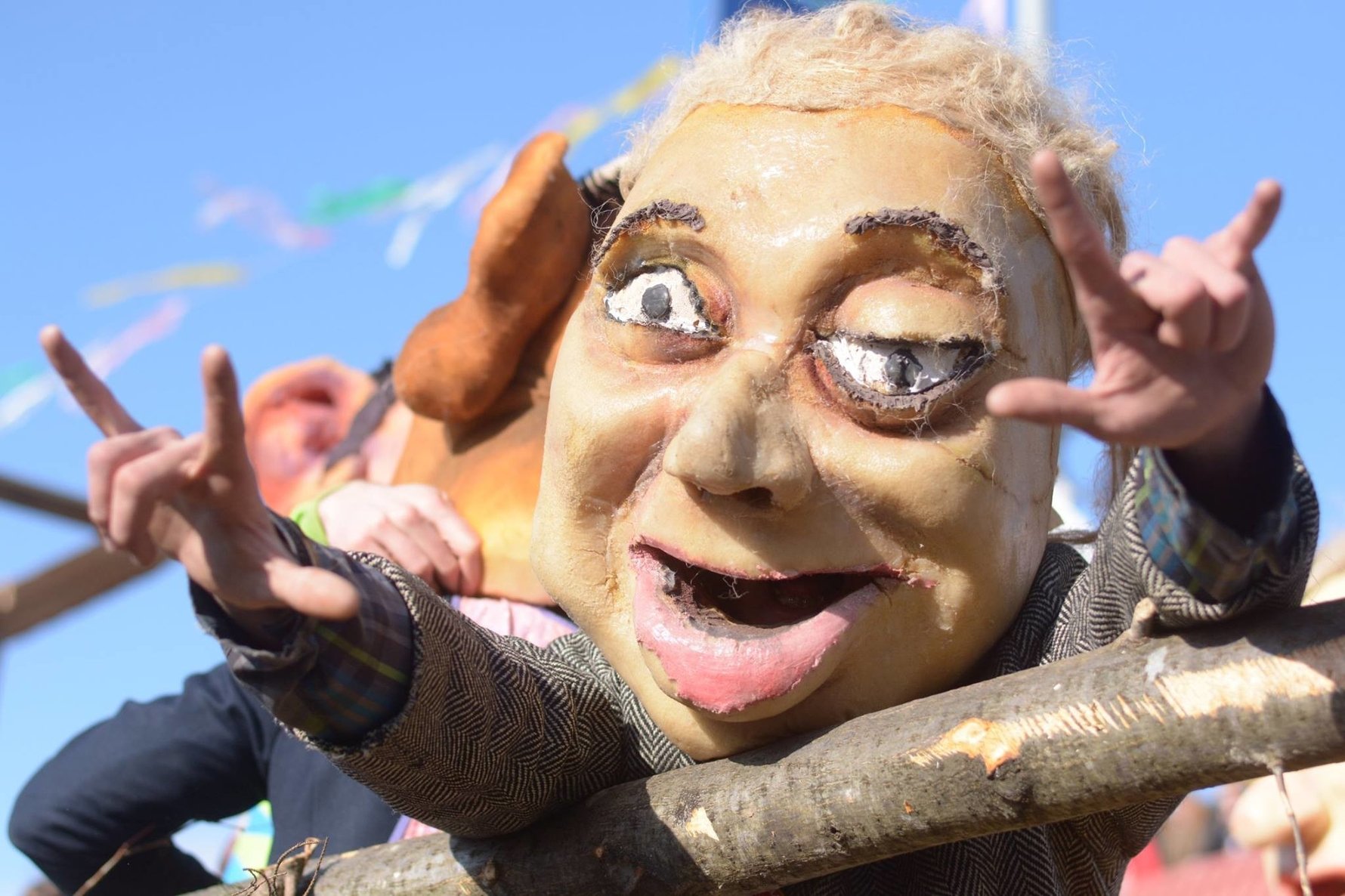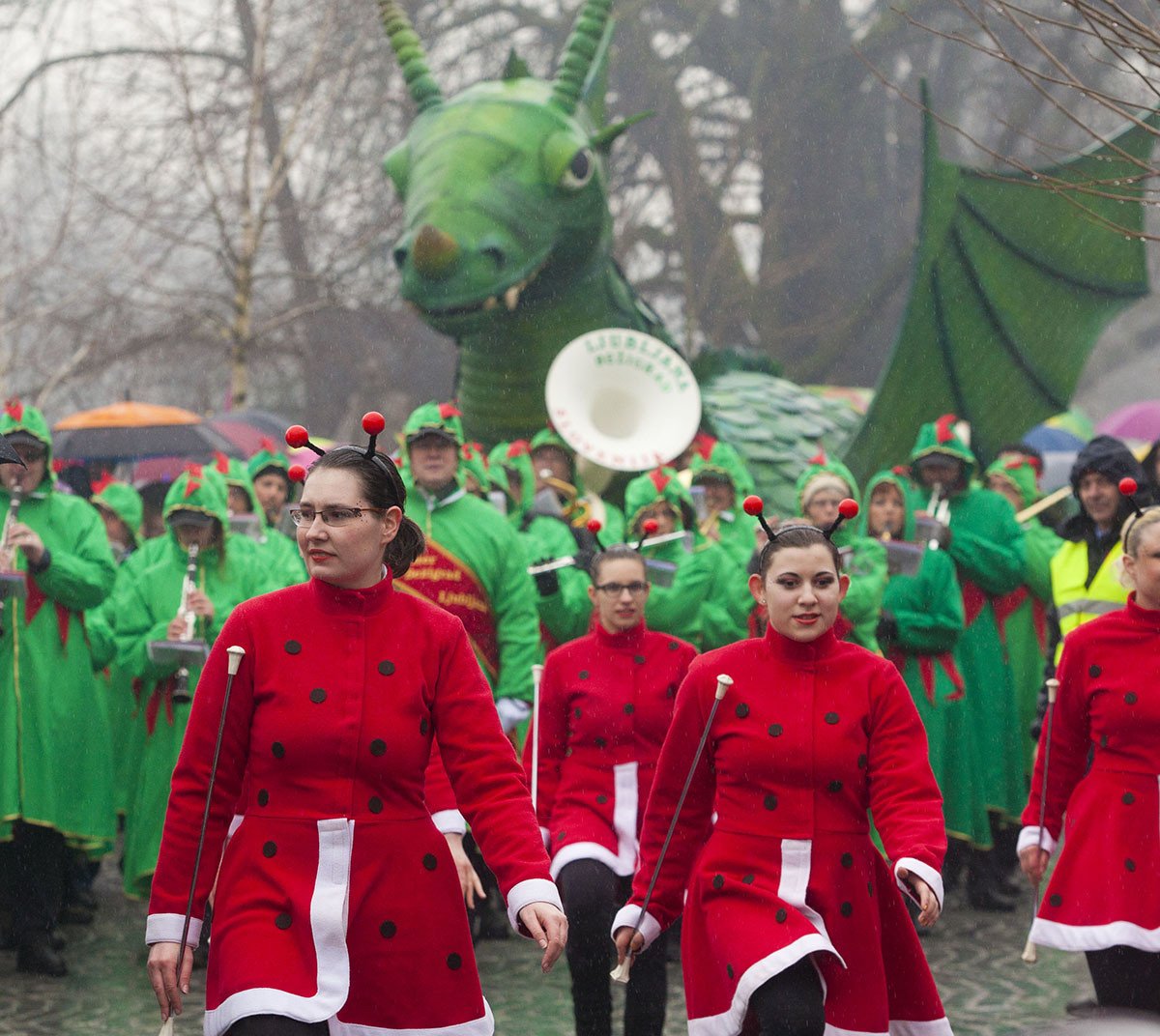Kurentovanje in Ptuj

Seeing large hairy sheep standing up-right and dancing around might sound strange, but don’t worry, you’re not having a nightmare. These folkloric figures are the Kurenti and they’re meant to look terrifying in order to ward off winter and evil spirits. Taking its name from the Kurenti, Ptuj's Kurentovanje is a carnival like no other, attracting more than 100,000 visitors it is the largest celebration of its kind in Slovenia. Visitors get into the spirit of things by dressing up as well as consuming copious amounts of donuts (krof in Slovene). The highlight of the 10-days of festivities is a massive masked parade through the centre of town where the Kurenti can seem tame by comparison to some other costumes.
Cerknica Carnival (Pust v Cerknici)

Each year on Fat Thursday the traditional madness begins, Cerknica ceases to be Cerknica, replaced by ‘Butale’ the town of the ‘Butalci’ or hillbillies, whose mayor takes control for a week of carnival festivities. First on the program is the traditional “sawing of the witch”, where locals deal with Uršula, the mother of the Slivnica witches, by taking a blade to her. Then on Saturday a masked parade is held for children in the sports hall. Whilst the main event of the carnival kicks off at “somewhere around 12:32 on the dot” on Sunday, or so the programme says, with various costumed characters including hillbillies and the giant witch Uršula, along with whip cracking locals and marching bands, parading along the main street in town. The carnival festivities are great fun, with most visitors getting into the spirit of things and dressing up themselves. The festivities also feature traditional carnival treats like donuts (krofi) and mulled wine (kuhano vino).
Ljubljana's Dragon Carnival

Ljubljana's traditional Dragon carnival consists of a large Shrovetide parade through the city's streets and a programme of entertainment held in the centrally on Kongresni Trg. The carnival parade includes, among others, a number of typical Slovenian carnival figures rooted in pagan tradition, such as 'kurent', 'laufar', 'morostar' and many others. The tradition of celebrating Shrovetide with masks and carnival processions dates back to ancient pagan times. After 1300, Central Europe saw the merging of pagan and Christian traditions and masked celebrations began to be held over the days preceding the 40-day fasting period of Lent. Slovenian carnival figures are very colourful and Slovenian Shrovetide traditions, reflecting the distinctive local features of the rural environments of the past, unique in many ways.





Comments